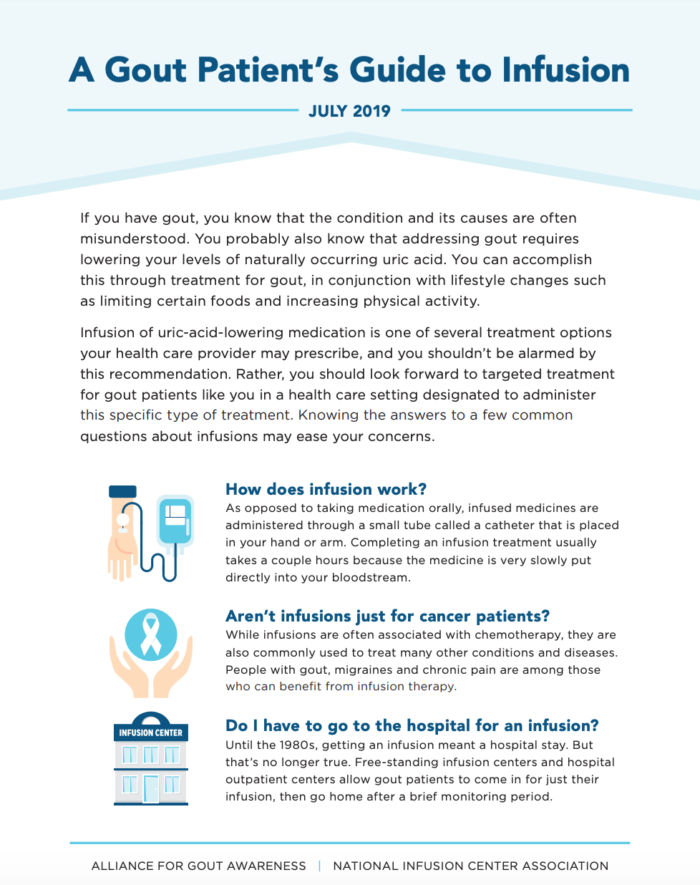Gout Patients Grapple with Infusion Confusion
July 10, 2019
Being diagnosed with gout can spring a number of surprises on people. They must first come to understand the nature of the disease, which occurs due to uric acid build-up in the joints. Then they must separate the myths (natural remedies like cherry juice can cure the disease) from the facts (gout can be managed successfully – but not cured), and that requires seeing a health care provider, typically a gout specialist, and following a prescribed treatment path).

But patients may not be prepared to discover that their treatment will involve an infusion. Infused medicine designed to lower patients’ uric acid levels is a routine part of care for some gout patients. Yet health care providers report a drop-off in patient care after patients are prescribed an infused treatment.
For some people, that may reflect health insurance barriers that leave patients unable to pay for the treatment. But for others, misgivings or a lack of understanding about infused medicine may be the cause.
“Patients are often hesitant, even scared, at the prospect of having their medicine infused,” explained rheumatologist Christopher Parker, DO. “Some get alarmed because they associate infusion with cancer treatment. Others worry about discomfort or are afraid of needles.”
To assuage patients’ fears and provide usable information about gout treatment infusions, the Alliance for Gout Awareness has issued “A Gout Patient’s Guide to Infusion.” The document addresses common questions, pointing out:
How infusion works. Unlike oral medication, infusions feed medicine directly into your bloodstream at a measured pace over a period of a couple hours.
Infusions aren’t only for chemotherapy. In addition to gout, conditions such as migraine and chronic pain can also be treated through infusion.
Infusion doesn’t always occur at a hospital. Outpatient centers and free-standing infusion clinics, which may be closer or more convenient for some patients, also provide these treatments.
Infusion experiences can be tailored to patients’ needs. Centers may allow patients to bring along a family member or friend to talk with during the infusion. Patients can also snack, read, watch a show, or listen to music as they wait for their infusion to complete.
Not every person with gout will require an infusion; the treatment is typically reserved for patients who are not responding to oral medication. But for those whose health care provider does prescribe infused treatment, the Alliance for Gout Awareness’ new resource may provide the answers and encouragement necessary to move forward with managing their disease.
Learn more at www.GoutAlliance.org.
Categorized in: Blog


